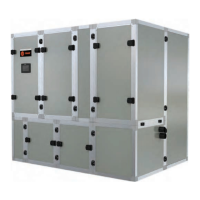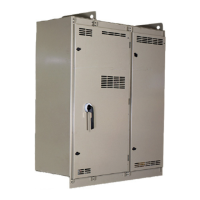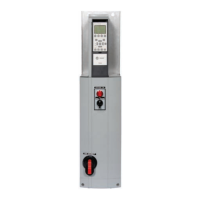74
PKG-SVX027D-EN
most facilities need to conform to pH discharge limits.
ScaleBreak-MP® Neutralizer can be utilized to safely
elevate your pH to meet your discharge limit so it can
be flushed to the drain. Please follow the instructions
for this process in the ScaleBreak-MP Neutralizer
information sheet.
13. To flush your heat exchanger, turn off your circulation
pump, remove the return hose from your recirculation
system and put it in a drain.
14. Add a fresh water hose to your recirculation bucket on
your pump system and turn the pump back on.
15. Continue running clean water through the heat
exchanger for 10-15 minutes or until the return water is
running clear. This action will also flush out your pump
system.
16. As an added safeguard you can reverse your hoses so
you pump into the top and out the bottom. This action
will flush away any debris that may have settled out the
bottom of the exchanger.
17. Disconnect your hoses, close the valves you performed
your circulation through and open the valves for the
exchanger supply water.
18. Your heat exchanger can now be returned to service.
Notes:
• Follow all local regulations for discharge.
• Follow all plant personal protective equipment
guidelines as determined by your health &
safety team.
• ScaleBreak-MP has very minimal corrosion
rates, however, the application of ScaleBreak
-Mp may reveal pre-existing under-deposit
corrosion (UD) or microbiologically influenced
corrosion (MIC). These types of corrosion can
present themselves in the form of pitting, pin
holes or similar types of damage.
• HCl based descaling solutions are one of the
most common acid types used for descaling,
however, it is NOT recommended for use
brazed plate heat exchanger materials and may
damage the equipment, and it therefore NOT
recommended for use.
Chemical Cleaning Economizer Coil
Chemical cleaning removes scale deposits built up by
minerals in the water. For a suitable chemical solution,
consult a water treatment specialist. The condenser water
circuit is composed of copper, steel, and cast iron.
The chemical supply house should approve or provide all
materials used in the external circulating system, along
with the quantity of cleaning material, duration of cleaning
time, and safety precautions necessary for handling the
cleaning agent.
Piping Components
Water Valves
WARNING
Hazardous Voltage w/Capacitors!
Failure to disconnect power and discharge capacitors
before servicing could result in death or serious
injury.
Disconnect all electric power, including remote
disconnects and discharge all motor start/run
capacitors before servicing. Follow proper lockout/
tagout procedures to ensure the power cannot be
inadvertently energized. For variable frequency drives
or other energy storing components provided by
Trane or others, refer to the appropriate
manufacturer’s literature for allowable waiting periods
for discharge of capacitors. Verify with a CAT III or IV
voltmeter rated per NFPA 70E that all capacitors have
discharged.
Water valves have a stern packing nut. If there is evidence
of water leakage at the valve stem, proceed as follows:
1. Remove actuator motor from support plate.
2. Remove shaft coupling.
3. Torque the packing nut to 10-ft.-lbs. of torque.
4. Replace shaft coupling.
5. Replace actuator motor.
Flow Switch
Flow switches have a magnet on the vane assembly that
attracts ferrous particulate. The particulate may build up on
the magnet to the point that the vane will wedge and not
operate properly. When the flow switch does not operate,
remove and replace.
Maintenance Periodic Checklists
WARNING
Hazardous Service Procedures!
Failure to follow all precautions in this manual and on
the tags, stickers, and labels could result in death or
serious injury.
Technicians, in order to protect themselves from
potential electrical, mechanical, and chemical
hazards, MUST follow precautions in this manual and
on the tags, stickers, and labels, as well as the
following instructions: Unless specified otherwise,
disconnect all electrical power including remote
disconnect and discharge all energy storing devices
such as capacitors before servicing. Follow proper
lockout/tagout procedures to ensure the power can
not be inadvertently energized. When necessary to
work with live electrical components, have a qualified
licensed electrician or other individual who has been
trained in handling live electrical components perform
these tasks.
Maintenance

